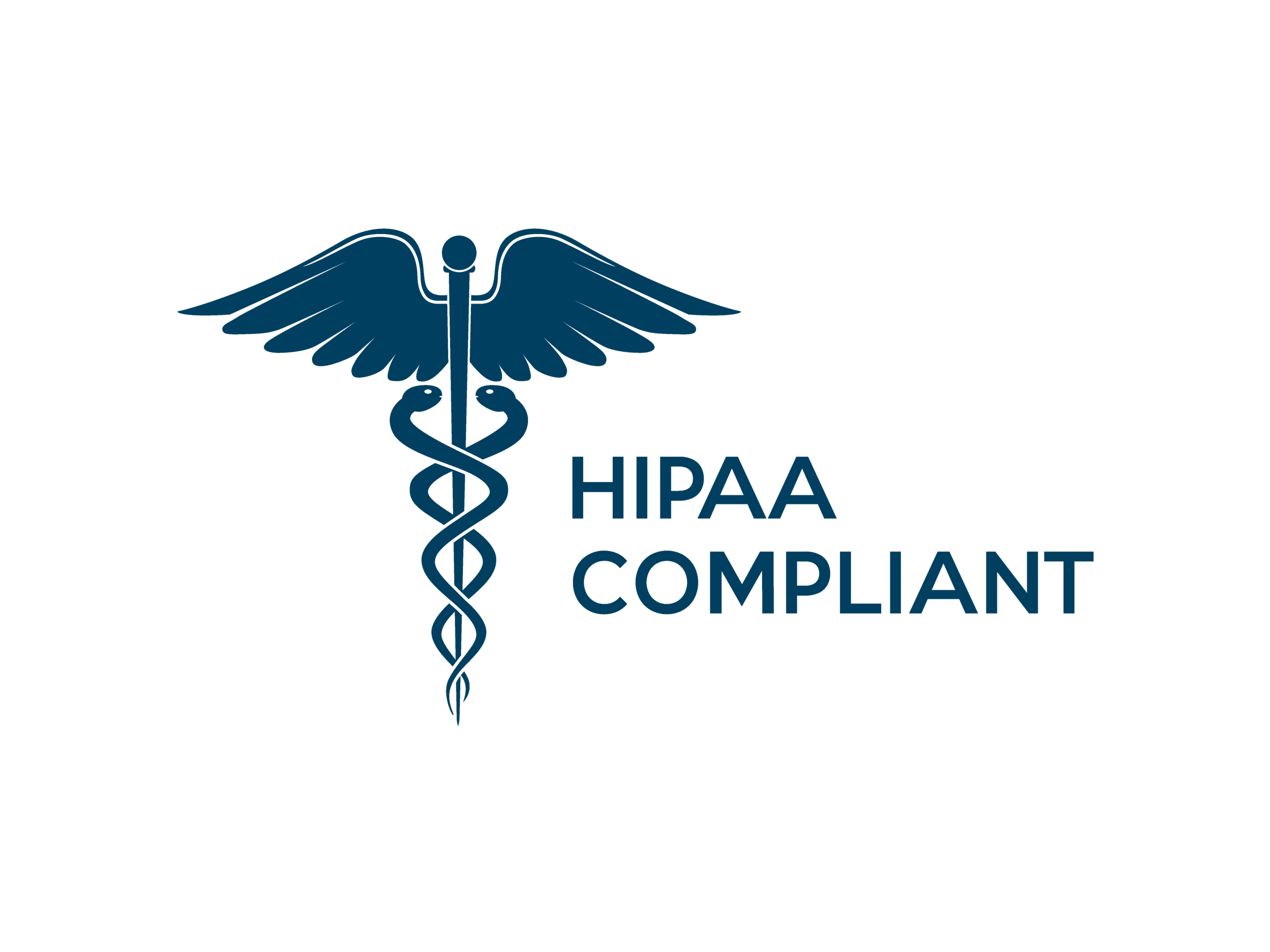 In an ideal healthcare landscape, a patient’s medical history seamlessly travels with them, readily available to an authorized healthcare organization whenever and wherever needed. Cloud computing services offer this very possibility, revolutionizing how healthcare organizations store, manage, and access critical patient data. However, this technological leap comes with a crucial responsibility: ensuring patient privacy and data security. This is where the Health Insurance Portability and Accountability Act (HIPAA) comes in, providing the necessary framework to safeguard sensitive information in the cloud technology era.
In an ideal healthcare landscape, a patient’s medical history seamlessly travels with them, readily available to an authorized healthcare organization whenever and wherever needed. Cloud computing services offer this very possibility, revolutionizing how healthcare organizations store, manage, and access critical patient data. However, this technological leap comes with a crucial responsibility: ensuring patient privacy and data security. This is where the Health Insurance Portability and Accountability Act (HIPAA) comes in, providing the necessary framework to safeguard sensitive information in the cloud technology era.
Moving your healthcare platform to the cloud offers significant advantages, but it also comes with its own set of challenges. Our article, Cloud Migration for Healthcare Platform, explores these challenges and provides a roadmap for a smooth transition.
Safeguarding Patient Data in the Cloud: HIPAA Compliance for Healthcare Providers
 The growing trend for healthcare providers is leveraging cloud solutions for patient data management. However, safeguarding patient privacy and security necessitates strict compliance with regulations set forth by the Department of Health and Human Services Office for Civil Rights (HHS OCR).
The growing trend for healthcare providers is leveraging cloud solutions for patient data management. However, safeguarding patient privacy and security necessitates strict compliance with regulations set forth by the Department of Health and Human Services Office for Civil Rights (HHS OCR).
HIPAA compliant cloud storage, offered by cloud service providers (CSPs), functions like a secure vault for electronic protected health information (ePHI). These cloud based services utilize robust security measures to safeguard patient data throughout its lifecycle in the cloud:
- Encryption: Data is scrambled both at rest (when stored) and in transit (when transferred), making it unreadable by unauthorized individuals.
- Granular Access Controls: Only authorized healthcare provider personnel with a legitimate need to know can access ePHI. Multi-factor authentication and role-based access controls (RBAC) ensure the right people have access to the right data at the right time.
- Meticulous Audit Logs: Every access attempt and activity related to ePHI is meticulously documented, allowing for tracking user behavior and identifying potential security breaches.
By prioritizing HIPAA compliance and leveraging secure cloud storage solutions, healthcare providers can ensure the confidentiality, integrity, and availability of patient data while reaping the benefits of scalability and efficiency offered by the cloud.
Shared Responsibility: Working Together for Secure Cloud Healthcare
 The secure storage and management of patient data is paramount in healthcare. Cloud computing offers healthcare organizations (covered entities) a scalable and efficient solution, but ensuring patient privacy and data security requires strict adherence to HIPAA regulations. This responsibility is shared between the covered entity and cloud service provider (CSP).
The secure storage and management of patient data is paramount in healthcare. Cloud computing offers healthcare organizations (covered entities) a scalable and efficient solution, but ensuring patient privacy and data security requires strict adherence to HIPAA regulations. This responsibility is shared between the covered entity and cloud service provider (CSP).
Covered Entities: Supporting HIPAA Compliance
- Regular Risk Assessments: Proactively identify potential threats to protected health information (PHI) security in the cloud environment.
- Multi-Layered Safeguards: Implement a comprehensive security framework, encompassing:
- Administrative Safeguards: Policies and procedures for managing security risks, such as a designated security official and workforce training on HIPAA requirements.
- Physical Safeguards: Measures to secure physical locations where PHI resides, even in a cloud environment (e.g., facility access controls).
- Technical Safeguards: Technical controls to protect PHI throughout its lifecycle, including encryption of data at rest and in transit, access controls based on least privilege, and audit logs to track access attempts.
- Staff Training: Educate staff on HIPAA regulations and data security best practices to ensure they play a vital role in protecting patient privacy.
- Choosing the Right Partner: Select a HIPAA compliant cloud provider that offers a Business Associate Agreement (BAA) clearly outlining their responsibilities for protecting PHI on your behalf.
Cloud Service Providers: Upholding Security Standards
- Robust Security: Implement industry-leading security features like encryption, access controls (identity and access management), and intrusion detection systems to safeguard PHI stored on their platform.
- HIPAA Compliant BAAs: Offer BAAs that detail their specific obligations for protecting PHI and their response plan in case of a security incident.
- Collaboration with Covered Entities: Assist healthcare organizations in meeting their HIPAA compliance obligations by providing guidance on security best practices and configuration options for their cloud services.
By working collaboratively and understanding their respective roles, both covered entities and CSPs can leverage the benefits of cloud computing while ensuring the security and privacy of patient data.
The HIPAA Security Rule: Safeguarding ePHI in the Cloud

The HIPAA Security Rule serves as a blueprint for protecting electronic protected health information (ePHI) within the cloud environment. It establishes a robust security framework built upon three key pillars:
1. Comprehensive Security Management:
The HIPAA Rules mandates the implementation of a comprehensive security management program. This program focuses on policies and procedures that empower healthcare organizations to effectively manage security risks for ePHI. Here’s how it works:
- Security Management Process: A defined structure outlining how the organization identifies, assesses, and addresses security risks.
- Security Officer Appointment: Designation of a qualified individual responsible for overseeing the security program and ensuring its effectiveness.
- Workforce Security Training: Implementation of a robust training program that educates staff on HIPAA requirements and best practices for data security. This empowers them to play a vital role in protecting patient privacy.
- Incident Response Plan: Establishment of clear procedures for identifying, reporting, and responding to security incidents. This ensures a swift and coordinated response to potential data breaches.
2. Secure Physical Environment:
Environmental controls address the physical security measures required to safeguard ePHI stored electronically and in paper form. These measures create a secure physical environment for sensitive data:
- Facility Access Controls: Environmental controls address the physical security of ePHI, both electronic and paper-based to restrict physical entry to areas where ePHI is stored.
- Device Security: Measures to ensure the physical security of devices containing ePHI, including workstation locks, server room access controls, and encryption of portable devices like laptops.
- Secure Disposal Procedures: Establishment of clear and secure protocols for disposing of ePHI-containing materials. This may involve shredding paper documents and secure erasure of electronic data from storage devices.
By implementing these comprehensive safeguards, healthcare organizations can create a multi-layered defense system to protect the confidentiality, integrity, and availability of ePHI in the cloud environment. This ensures patient privacy and data security while allowing them to leverage the benefits of cloud computing for secure and efficient patient care.
3. Data Integrity Procedures: Securing ePHI Across its Digital Journey
These safeguards prioritize technical controls to protect ePHI throughout its lifecycle in the cloud. This includes:
- Least Privilege Permissions: Granting permissions to ePHI only to authorized personnel with a legitimate need to know. This ensures that users can only view or modify the specific data required for their job function.
- Data Validation and Backups: Implementing mechanisms to ensure the accuracy and completeness of ePHI. This may involve automated data validation procedures and regular data backups to a secure location.
- Encryption for Data Security: Encrypting ePHI at rest (when stored) and in transit (when transferred) to safeguard it from unauthorized viewing or alteration. Encryption renders data unreadable by anyone who doesn’t possess the decryption key.
- Audit Logs for Monitoring: Maintaining a system for tracking and recording all activities related to ePHI. This allows for monitoring user behavior and identifying potential security incidents, such as unauthorized data modifications.
Implementing these comprehensive, multi-layered safeguards empowers covered entities to create a robust security environment for ePHI in the cloud. This ensures patient privacy and data security, allowing healthcare organizations to leverage the benefits of cloud computing for secure, efficient, and patient-centered care.
Health Insurance Portability: Your Coverage Moves with You
 While life’s journey necessitates healthcare interactions, transitioning between health insurance plans can raise anxieties regarding coverage continuity and access to crucial benefits. This document explores the technical underpinnings within the healthcare system that guarantee a secure and uninterrupted flow of health insurance coverage during significant life events, such as starting a family or embarking on a new career path.
While life’s journey necessitates healthcare interactions, transitioning between health insurance plans can raise anxieties regarding coverage continuity and access to crucial benefits. This document explores the technical underpinnings within the healthcare system that guarantee a secure and uninterrupted flow of health insurance coverage during significant life events, such as starting a family or embarking on a new career path.
- Protection from Pre-Existing Condition Exclusions: A new plan can’t deny you coverage or charge you more due to pre-existing medical conditions. This safeguard prevents discrimination based on your health history.
- Avoiding Waiting Periods: Certain benefits, like maternity care, often have waiting periods. This system helps ensure everyone contributes fairly before accessing specific benefits. However, switching plans won’t restart these waits. Time spent enrolled previously can often be applied towards meeting the requirements in your new plan.
- Credit for Prior Coverage: Your past health insurance counts! When switching plans, the time you were covered can contribute towards meeting any waiting periods in your new plan.
The ability to switch health insurance plans while maintaining key benefits empowers you to take control of your health journey:
- Embrace Change with Confidence: Whether you change jobs, become self-employed, or pursue new beginnings, you can do so knowing your health coverage remains secure.
- Maintain Continuity of Care: By avoiding coverage gaps, you can ensure uninterrupted access to the healthcare services you need, promoting overall well-being.
- Freedom to Choose: This flexibility allows you to explore different health insurance options that better suit your evolving needs and circumstances.
A Secure Future for Healthcare in the Cloud Computing Era
Secure cloud computing, compliant with HIPAA rules and regulations, empowers both healthcare organizations and patients. For organizations, this translates to secure storage of sensitive patient data, along with the benefits of scalability and efficiency offered by the cloud. Patients, on the other hand, can leverage HIPAA-compliant portability to ensure continuous health coverage and make informed decisions throughout their healthcare journey. This convergence fosters a secure and dynamic healthcare ecosystem that benefits both parties.
By embracing secure cloud computing technology and HIPAA rules compliance, the healthcare industry can create a future of empowered patients, efficient organizations, and a secure and dynamic healthcare ecosystem. For a deeper dive into the advantages cloud tools offer, check out our comprehensive guide: UNVEILING THE POWER OF CLOUD TOOLS: A COMPREHENSIVE GUIDE





